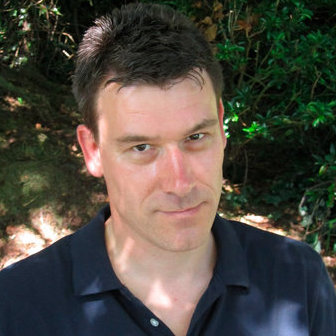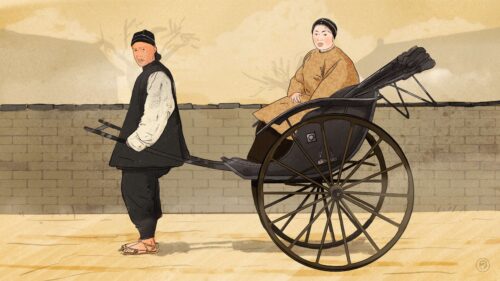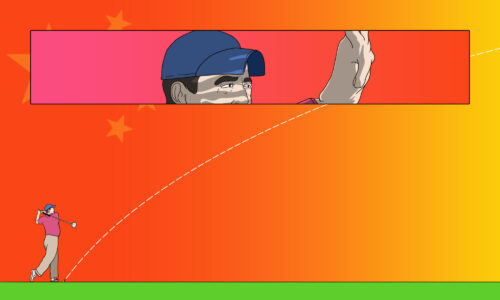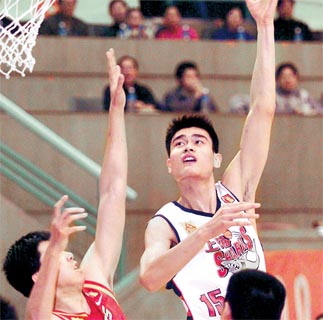This is book No. 10 in Paul French’s Ultimate China Bookshelf.

Blurbs:
“Shanghai between the world wars is a fascination of Westerns, the Chinese themselves, but also the Japanese. The zeitgeist of 1920s Shanghai is reflected in the appropriately named Shanghai by Riichi Yokomitsu.”
—Asian Books Blog
“Yokomitsu incorporated striking visuality into a realistic mode that presents a disturbing picture of a city in turmoil. The result is a brilliant evocation of Shanghai as a gritty ideological battleground and as an exotic landscape where dreams of sexual and economic domination are nurtured.”
—Goodreads
“Filled with beautiful and disturbing imagery, it focuses on the lives of a group of Japanese expatriates living in Shanghai, a veritable cauldron of political and social unrest. In a time of strikes and riots, idealism and despair, people of various cultures (from sullen prostitutes to sketchy businessmen, including a man who exports human skeletons) try to make sense of life and love in their shifting, chaotic world. Dennis Washburn’s graceful translation is augmented by an insightful afterword.”
—Publishers Weekly
“Yokomitsu describes Shanghai as a cosmopolitan city that is a heady mix of frenzied economic activity and political fanaticism swirling together in a pressure-cooker that is likely to explode at any minute.”
—Andrea Kempf, Johnson County Community College
About the author:
Fukushima-born Yokomitsu Riichi (1898-1947) was an essayist, writer, and critical theorist who became one of the most powerful and influential literary figures in Japan during the 1920s and 1930s. He looked to contemporary avant-garde movements in Europe — Dadaism, futurism, surrealism, expressionism — for inspiration in his effort to explode the conventions of literary language and to break free of what he saw as the “prison house of modern culture.” He began writing around 1916 (after graduating from Waseda University) and, in the early 1920s, was a founder of the literary magazine Bungei-Jidai (“Literary Age”), and through this outlet a de facto leader (along with the Nobel Prize winner Kawabata Yasunari) of the literary group known collectively as the Shinkankakuha, or the New Sensation School, which focused on exploring “new impressions” or “new perceptions” in the writing of Japanese literature and was inspired by European avant-garde writing of the time.
Shanghai was Yokomitsu’s breakthrough work and was followed by Haru wa basha ni notte (1926, Spring Came on a Horse-Drawn Cart), dealing with his wife’s fatal illness, and Kikai (1930, Machine), reflecting his concerns over mechanistic principles supposedly governing human behavior in contemporary Japan. He died in Tokyo in 1947. A major literary prize in Japan was named after him in 1949.
The book in 150 words:
Though serialized in a Japanese literary magazine between 1928 to 1931, Yokomitsu’s novel (most recently translated into English by Dennis Washburn) takes place in 1925. Shanghai tells the story of a group of Japanese expatriates living in the Shanghai International Settlement at the time of the May 30th Incident of 1925, when the Shanghai Municipal Police opened fire on Chinese protesters. The book is a marvelously evocative representation of Shanghai that reads like a hardboiled noir with fog, rain, and dark dangerous streets.
Yokomitsu spent time in Shanghai, and his novel reveals the city as a melting pot of cultures, nationalities, and ideas. He shows us Shanghai’s Japanese community before World War Two, the positive interactions between Chinese and Japanese intellectuals and artists, as well as the large number of Japanese-run cotton mills and silk filatures, often with awful working conditions. The result is a brilliant evocation of Shanghai, almost a decade prior to Mao Dun’s own evocation of the city in Midnight (book No. 9).
Your free takeaways:
Sanki, a man with the fair skin and intelligent face of some medieval hero, walked around the street and returned to the Bund. A group of exhausted Russian prostitutes was sitting on a bench along the strand. The blue lamp of a sampan moving against the current rotated interminably before their silent eyes.
Every now and then Qiu-lan’s high-bridged nose would turn towards the shop fronts on her left and right as her rickshaw slipped in and out of the shade of the trees lining the street. Beggars spitting phlegm. Rickshawmen pitching pennies on the pavement. Customers coming out of restaurants with lips and chins glistening. Fortune tellers with pipes in their mouths looking intently into the faces of clients. All these people turned to stare at Qiu-lan’s face as she passed.
Osugi halted and cried, halted and cried as if she were counting the pillars. Passing through the alley, she moved alongside a canal that flowed through the back streets. Pitch-black bubbles quietly gurgled on the surface of the canal water. A bluish green quietly lapped at the oil floating on the surface along the walls of the canal. The mortar encasing the walls was beginning to peel away.
Oh well, what’s done is done. If I give her five yen that’ll be the end of it. If having a conscience was such a big deal, then Shanghai would be full of unproductive people doing nothing.
Why this book should be on your China bookshelf:
If nothing else, Riichi Yokomitsu’s Shanghai should sit on our Ultimate China Bookshelf as a symbol of the grand tradition of cultural and artistic interaction between Japan and China. This tradition tends to be overlooked often today as it does not fit neatly into the post-war and post-1949 Communist Party narrative of Japan. Put simply, and in the starkly Manichean ways of PRC propaganda — China good; Japan bad; end of. That there was considerable interaction and sharing of creative ideas and works clouds that narrative. Put aside Sun Yat-sen (孙中山 Sūn Zhōngshān), Chiang Kai-shek (蔣介石 Jiǎng Jièshí), and the other senior Nationalists who spent time living and/or studying in Japan; we have a plethora of writers — Lǔ Xùn 鲁迅, Máo Dùn 茅盾, etc., as well as artists — who were heavily influenced by the Japanese.
Christian Henriot, the historian of Shanghai, notes, “Yokomitsu’s Shanghai appears much less sharply divided between foreign and Chinese or even Japanese. The dividing line is more about the peculiar nature of the district north of Soochow Creek where both Chinese and Japanese live in equally squalid conditions, which he counterpoints to the cultured atmosphere in the historic core of Shanghai.”
In inter-war Shanghai, the Hongkou bookshop of Kanzo Uchiyama perhaps best symbolized this interaction and cross-fertilization between Japanese and Chinese writers. And of course, some Japanese writers came to China and wrote their impressions — most notably Riichi Yomomitsu. It was a cultural flowering that deserves to be better remembered.
In his heyday, in the 1920s and 1930s, Yokomitsu was referred to as bungaku no kamisama (a god of literature). Japanese critics regarded him as the best of his generation. Therefore, if nothing else, his views on Shanghai and China were listened to. Yokomitsu was coming from Asia’s other great modern city in the 1920s, Tokyo, yet he was incredibly impressed by Shanghai. He was enthralled by its modernity, yet it led him to question the very notion of modernity and where it was headed. This is perhaps useful when we hear claims to Shanghai now being a city of the future — perhaps so, but what is that future? we should ask.
Yokomitsu’s prose is also of interest to us. Just as our previous entrant on the shelf, Mao Dun in Midnight, was seeking a way of conveying progressive ideas without the stultifying rigidity of Marxist-approved socialist-realism, so Yokomitsu is using his “new realism” (or more commonly, perhaps, “new sensation”) as a counterweight to the “Marxist Literature of the Proletarian School” of the 1920s.
It is also worth noting that Yokomitsu’s Shanghai is, in part, a historical novel, depicting the city at a crucial historical juncture, the May 30th Movement of 1925 and Sun Yat-sen’s call that, “Shanghai is China.” Literary critics have particularly praised Yokomitsu’s handling of scenes involving crowds in the city.
Personally, I feel his strongest sections are those where his characters are simply wandering Shanghai — its backstreets, alleys, and canal banks – engulfed in fogs and mists, surrounded by miasmas and bubbling, oozing black industrial waste. Here, Yokomitsu captures the city as an industrial entity, one caused in significant part by Japanese corporations and companies. It was this industrial city that Mao Dun was to delve into a few years later in Midnight.
Among all the descriptions of Shanghai as a lively, neon-lit, nightclub-ridden metropolis, it is Midnight and Shanghai that best remind us that all of that exciting and privileged world was built off the sweat, toil, and exploitation (as well as environmental degradation, which Yokomitsu describes) of the industrial city all around. And it is that legacy of modernism that we are still dealing with in Shanghai today, alongside calendar girl cafés and old guys playing middle-of-the-road jazz for nostalgia buffs.
Next time:
The physical city of Shanghai that Riichi Yokomitsu and our previous novelist, Mao Dun, described was rapidly becoming a thing of lost history by the early years of the 21st century. That change — the cranes, bulldozers, construction sites, forced relocations, social tensions, and determined hold-outs — was especially well-catalogued by one thoughtful photographer. And, of course, any good China collection should include photography and a stack of coffee table books, too.
Check out the other titles on Paul French’s Ultimate China Bookshelf.







